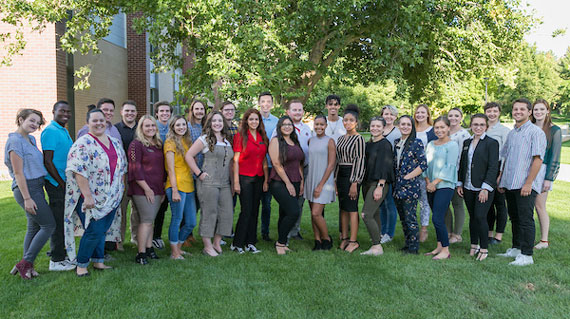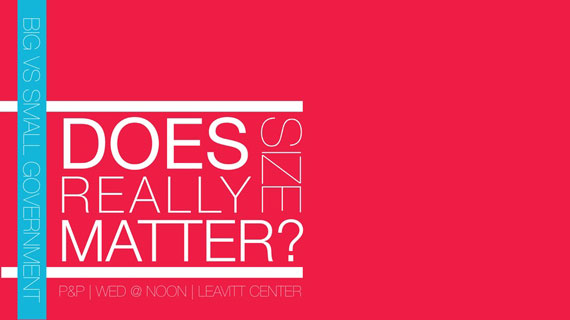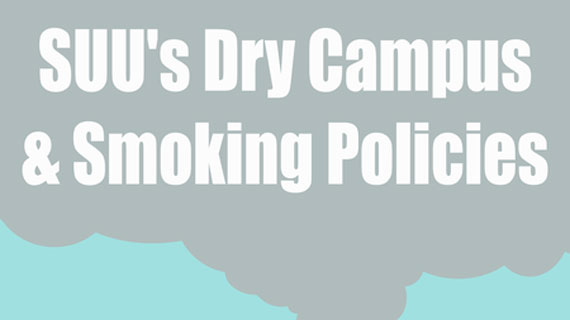Pizza and Politics - Climate Change
Posted: April 30, 2018 | Author: Cami Mathews | Read Time: 4 minutes
 The Michael O. Leavitt Center for Politics and Public Service hosts Pizza & Politics every Wednesday at noon to discuss a current political topic. Leavitt Center student employees research the topic and moderate the conversation. These discussions expose students to a variety of important issues and encourages them to share their own perspectives while learning all sides of an issue. Free pizza is provided for all who attend.
The Michael O. Leavitt Center for Politics and Public Service hosts Pizza & Politics every Wednesday at noon to discuss a current political topic. Leavitt Center student employees research the topic and moderate the conversation. These discussions expose students to a variety of important issues and encourages them to share their own perspectives while learning all sides of an issue. Free pizza is provided for all who attend.This week’s discussion on Climate Change was moderated by Abdi Eftin and Autumn Boren. Abdi is a senior dual major in Political Science and Communication from West Valley City, Utah. Autumn is a sophomore English Education major from Dallas, Texas.
It is crucial to gather a basic understanding of climate change before discussing. Climate change is a long-term change in the Earth’s overall temperature with massive and permanent ramifications. The weather is based off of atmospheric conditions that occur locally over short periods of time.
Key climate change indicators can be found in ice cores, tree rings, and coral reefs. Ice cores show how the climate responds to changes in gas levels. Tree rings and coral reefs reveal current warming is occurring ten-times faster than what was predicted. Other areas of focus include ocean warming, global temperature rise, shrinking ice sheets, rising sea level, and extreme weather.
Is there enough evidence to prove the climate is changing, rather than the weather?
Many audience members acknowledged the climate change indicators throughout the world. However, there is debate on what occurs naturally and what is escalated by human activity. Climate change is a natural phenomenon, so people can expect some differences throughout the years. There were people who said the climate change seen today is a direct result of human activity.
Why should we worry about an increased level in atmospheric greenhouse gases?
Energy from the sun warms the Earth. Some escapes back into space while the rest is held by greenhouse gases in the atmosphere. The Earth is about sixty degrees Fahrenheit; without the atmosphere it would be zero. The current level of carbon dioxide in the atmosphere is at a record high and has been steadily increasing since 1950.
According to the Environmental Protection Agency (EPA), natural sources, the sun’s energy, and human activity contribute to greenhouse gases. Natural sources include volcanic eruptions and respiration. Human activity includes deforestation and burning fossil fuels.
Audience members were divided on whether or not the increased levels were that much of a concern. Those that were worried about the increased levels said they were because of human contributions. Those saying the gases were not a big deal felt it is a natural occurrence and levels were bound to increase at some point.
Are the emissions from commercial agriculture justified by the benefits?
From agricultural work, nitrous oxide is produced by soil cultivation practices (commercial and organic fertilizers), fossil fuel combustion, nitric acid production, and biomass burning. Methane is produced by rice cultivation and manure management with domestic livestock.
Almost everyone in the room agreed that people need to eat and farms need to exist, so the resulting contribution to greenhouse gases was worth it. Only one person really stepped up and mentioned that there are ways to benefit from crops without creating harmful emissions. She mentioned practices of many indigenous people, citing their traditions and beliefs when working with the land. Though these practices are commendable, many people did not see it possible to stop mass producing food and go back to small crops.
Do you agree with President Trump’s decision to exit the Paris Climate Agreement?
The Paris Climate Agreement is a long-term goal of keeping the increase in global average temperature to well below 3.6 degree Fahrenheit in the next 100 years. This goal will cut down on emissions affecting climate change.
Countries have agreed to meet every five years to adjust the agreement. The United States of America is the only country not currently in the agreement. President Trump said it was “a bad deal for the U.S.”
Though the world is unified in the agreement, there is no binding contract. Students pointed out that even though the President backed out, nothing changes but potential political standing. A lot of students said by leaving the agreement the effects would not be seen within the climate, but within foreign relations.
What are some solutions to climate change?
A lot of people suggested recycling, cutting back on waste (food, plastic packaging, etc.), and being mindful of one’s carbon footprint. Students shared stories of carpooling with neighbors or riding bikes instead of driving their own cars to school. Overall, it was presented that people should think of others, and the world, and understand their impact on the world.
Learn more about climate change through EarthTime Stories and What Climate Change Means for Utah.
It is crucial to gather a basic understanding of climate change before discussing. Climate change is a long-term change in the Earth’s overall temperature with massive and permanent ramifications. The weather is based off of atmospheric conditions that occur locally over short periods of time.
Key climate change indicators can be found in ice cores, tree rings, and coral reefs. Ice cores show how the climate responds to changes in gas levels. Tree rings and coral reefs reveal current warming is occurring ten-times faster than what was predicted. Other areas of focus include ocean warming, global temperature rise, shrinking ice sheets, rising sea level, and extreme weather.
Is there enough evidence to prove the climate is changing, rather than the weather?
Many audience members acknowledged the climate change indicators throughout the world. However, there is debate on what occurs naturally and what is escalated by human activity. Climate change is a natural phenomenon, so people can expect some differences throughout the years. There were people who said the climate change seen today is a direct result of human activity.
Why should we worry about an increased level in atmospheric greenhouse gases?
Energy from the sun warms the Earth. Some escapes back into space while the rest is held by greenhouse gases in the atmosphere. The Earth is about sixty degrees Fahrenheit; without the atmosphere it would be zero. The current level of carbon dioxide in the atmosphere is at a record high and has been steadily increasing since 1950.
According to the Environmental Protection Agency (EPA), natural sources, the sun’s energy, and human activity contribute to greenhouse gases. Natural sources include volcanic eruptions and respiration. Human activity includes deforestation and burning fossil fuels.
Audience members were divided on whether or not the increased levels were that much of a concern. Those that were worried about the increased levels said they were because of human contributions. Those saying the gases were not a big deal felt it is a natural occurrence and levels were bound to increase at some point.
Are the emissions from commercial agriculture justified by the benefits?
From agricultural work, nitrous oxide is produced by soil cultivation practices (commercial and organic fertilizers), fossil fuel combustion, nitric acid production, and biomass burning. Methane is produced by rice cultivation and manure management with domestic livestock.
Almost everyone in the room agreed that people need to eat and farms need to exist, so the resulting contribution to greenhouse gases was worth it. Only one person really stepped up and mentioned that there are ways to benefit from crops without creating harmful emissions. She mentioned practices of many indigenous people, citing their traditions and beliefs when working with the land. Though these practices are commendable, many people did not see it possible to stop mass producing food and go back to small crops.
Do you agree with President Trump’s decision to exit the Paris Climate Agreement?
The Paris Climate Agreement is a long-term goal of keeping the increase in global average temperature to well below 3.6 degree Fahrenheit in the next 100 years. This goal will cut down on emissions affecting climate change.
Countries have agreed to meet every five years to adjust the agreement. The United States of America is the only country not currently in the agreement. President Trump said it was “a bad deal for the U.S.”
Though the world is unified in the agreement, there is no binding contract. Students pointed out that even though the President backed out, nothing changes but potential political standing. A lot of students said by leaving the agreement the effects would not be seen within the climate, but within foreign relations.
What are some solutions to climate change?
A lot of people suggested recycling, cutting back on waste (food, plastic packaging, etc.), and being mindful of one’s carbon footprint. Students shared stories of carpooling with neighbors or riding bikes instead of driving their own cars to school. Overall, it was presented that people should think of others, and the world, and understand their impact on the world.
Learn more about climate change through EarthTime Stories and What Climate Change Means for Utah.
This article was published more than 3 years ago and might contain outdated information or broken links. As a result, its accuracy cannot be guaranteed.
Tags: Blog Leavitt Center




